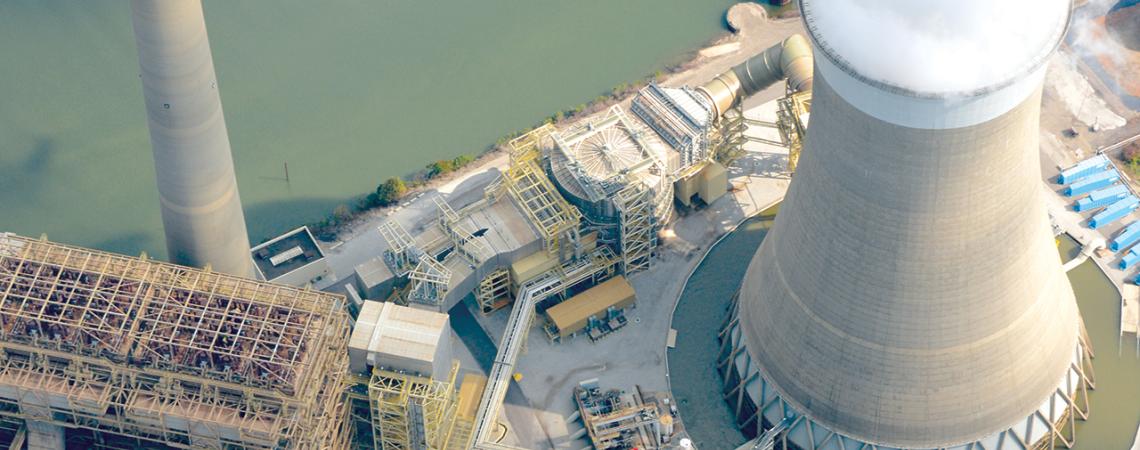Cardinal Station, located along the Ohio River in Jefferson County, is the primary source of power for Ohio co-op members.
Driving on Ohio Route 7 south of Steubenville near Brilliant, the first thing most people notice about the Cardinal Station power-generating facility is the snow-white plume emanating from the tall, thin dual stacks on the northern end of the station and from the shorter, stubbier tower to the south. The color of those plumes is significant. Long gone are the days when the stacks would send black smoke into the atmosphere. Thanks to more than $1 billion in investments in environmental equipment, that cloud is nearly all water vapor. Cardinal’s emission controls actually do a better job than federal law requires. It is one of the cleanest coal-burning generating plants in the world.
First impressions
“I was immediately struck at just how clean it is all over the plant,” says Pam Engbert, a member of lancaster-based South Central Power Company who toured Cardinal in July with fellow teachers from around the state. “You don’t expect to walk into a plant like this and for it to be this clean. Only one time I saw any coal outside the stockpiles, and that was near the pulverizer, where I would have expected to see a lot more than there was.”
The next thing people notice as they get closer is the sheer size of the place. Even the view from the entrance gate doesn’t give the complete perspective; it’s not until you get up near the Unit 3 cooling tower/stack that the magnitude really hits.
“It’s bigger than what I thought it would be, overall just a more massive place than you see in pictures or even just driving past,” says Marianne Williamson, another teacher and a member of Lorain-Medina Rural Electric Cooperative, which is based in Wellington.
Plenty of power
Of course, that size is important as well. Though Buckeye Power, the generation and transmission cooperative that provides electricity to all members of Ohio electric cooperatives, has added hydroelectric and renewables to its mix of power sources in recent years, Cardinal Station is still the workhorse of the fleet, capable of producing 1,880 megawatts of power at any given time — more than enough electricity for Ohio electric cooperative members on all but the most brutal summer day or the most bitter winter night.
Perhaps the most important bit about the plant, however, is neither its size nor its high-tech environmental controls.
Cardinal is a baseload plant, meaning that it is designed to operate all the time. However, like your car or any mechanical device, Cardinal must shut down occasionally for needed maintenance work.
“Repairs are always part of the operating plans,” says Tom Alban, vice president of power generation at Buckeye Power. “So even though we would like Cardinal to run 24-7-365, we are able to target the best times to be able to take it down and use our other generation sources to make up for it.”
We all own Cardinal
“Every co-op member has a stake in that plant,” Alban says. “In addition to getting their electricity from it most of the time, our members built it and added the improvements.”
It’s also important to note that Cardinal is the most economical of the generation resources owned by Buckeye Power — and of course, holding down costs means lower electric bills for cooperative members. The operations staff constantly monitors and evaluates new technology, finding ways to optimize the generation process to keep it safe, clean, affordable, and reliable.
The people who work there also care deeply about the environment. “You can tell when you listen to the staff that it’s different from working for one of the big utility companies,” Engbert says. “They not only are extremely knowledgeable in what they do, but they also care that they’re doing things the right way. They hold costs down because they know that affects other members. The emissions are clean and the plant is safe because being good neighbors is also the right thing to do.”









